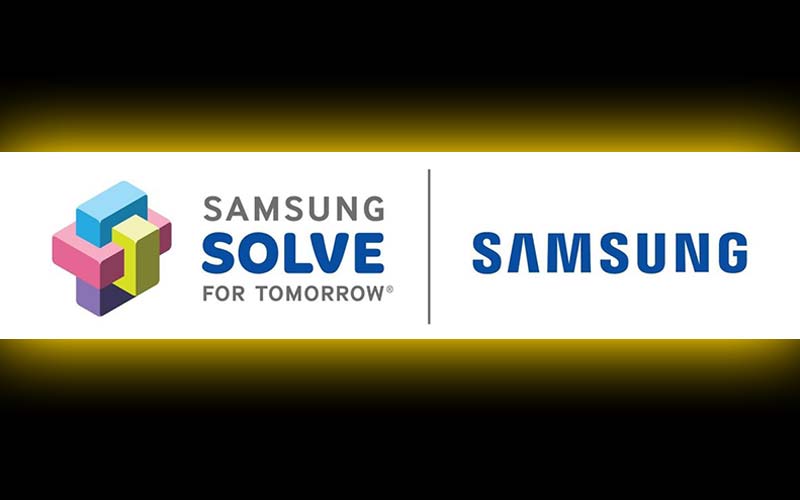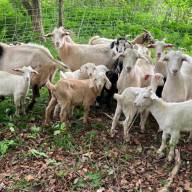For the second year in a row, Harwood Union Middle School is participating in the nationwide Samsung Solve for Tomorrow STEM challenge and both times the school has been selected as the winner from Vermont. The competition requires a proposal and video defining the problem the students seek to solve with STEM, focusing on how the project will make an impact on the community.
The school will receive $12,000 from Samsung for Harwood’s achievement thus far and could receive up to $100,000 if the students win overall. A winner has been selected from each of the 50 states. Ten finalists will be announced on April 19, each of whom will receive $50,000, and three winning schools will each receive $100,000.
Last year, Harwood won $6,500, which was used on TVs, audio equipment and devices (half of the funds were required to be spent on Samsung products), as well as a sewing machine, 3D printer, hand tools and other supplies to create a maker space for the school. Advisor/HUMS science teacher Angela Selvaggio said that she envisions using this year’s funds to continue building that hands-on resource.
LAST YEAR’S PROJECT
For last year’s project, Harwood students partnered with stewardMRV and Friends of the Mad River to construct a bear-proof three-bin waste receptacle that included composting along with interactive educations signs. This year, the team is working on building birdhouses and bat houses out of repurposed wood. The students were inspired by all the wood removed from Harwood’s damaged gym floor, which was going to go into the landfill. They salvaged what they could to build habitats for birds, bats and bees, as bird and pollinator populations are in decline globally and many species of bats are endangered.
Harwood’s project proposal says, “Globally, research has shown a decrease in the numbers of pollinators, including birds and bats. Our local community is home to small farms that depend on pollinators to grow healthy crops. Students plan to transform salvaged gym flooring into habitat-enhancing structures, and bird and bat houses in an effort to increase safe spaces for our pollinators to live. Our school recently experienced a damaging flood in the gymnasium, due to a sprinkler malfunction. The existing floor from 1965 was demolished, and thrown into dumpsters, with no effort to salvage any materials. Teachers and students were surprised to see the wood heading to the landfill and began problem solving how to use the old material in useful ways. Creating and engineering structures, bird and bat houses from salvaged wood, will require STEM skills to design, plan, and use precise measurements. Researching how to best enhance habitat for pollinators, thinking critically about habitat and collaboration will be required.”
‘AMAZING WORK’
The email the team received from Samsung announcing Harwood as a state winner said, “The Samsung team thanks you for the amazing work you do each day, inside and outside of the classroom, inspiring the next generation of STEM innovators! This year, our judges read the best quality applications and yours stood out as one of the exceptional ones. We are excited to help you continue your journey in our competition.”
“I wanted to get involved with this year's Samsung Solve For Tomorrow challenge because I was part of it last year, and during the process, we learned a lot, had fun, and won technology for our school!” eighth grader Harmony Devoe, Warren, said. “I also am doing it again because this challenge gives students the opportunity to work on solving a problem at school that they are passionate about in their community, and with possible very beneficial prizes. The most interesting thing for me so far has been learning more about our local ecosystem, and the endangered species in it. For example, little brown, northern long-eared, and tricolored bats, mainly because of fungal white nose syndrome, and seven species of birds. In fact, on Friday, March 17, we are going on a field trip to the Vermont Institute of Natural Science (VINS) to learn more about these species. We also will be meeting with Alyssa Bennet, the Small Mammal Biologist of Vermont. We've been working on planning the layout of our submission video. To win, we must submit a three-minute video about our project and how we used STEM and sustainability, and it must meet the high standards of the judge's rubric. In addition, we have been planning how we will add information to the bird and bat houses, to inform people on what we and the shelters are doing.
“We also have been meeting with our mentor we were given from Samsung, Lakshmin Thiagarajan. He has been helping us plan our project and video. Our project gives me hope for our local species and environment. Overall, we are very excited to continue with our project, and to start building our species shelters!”













